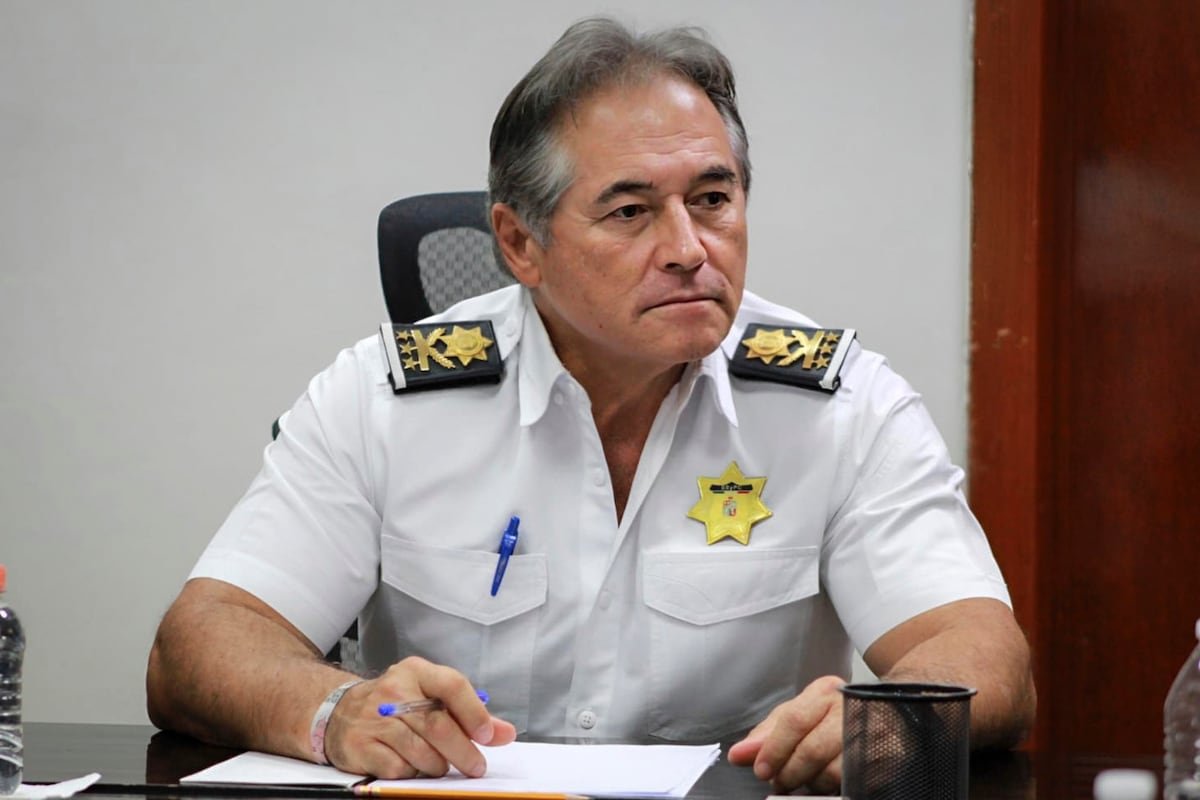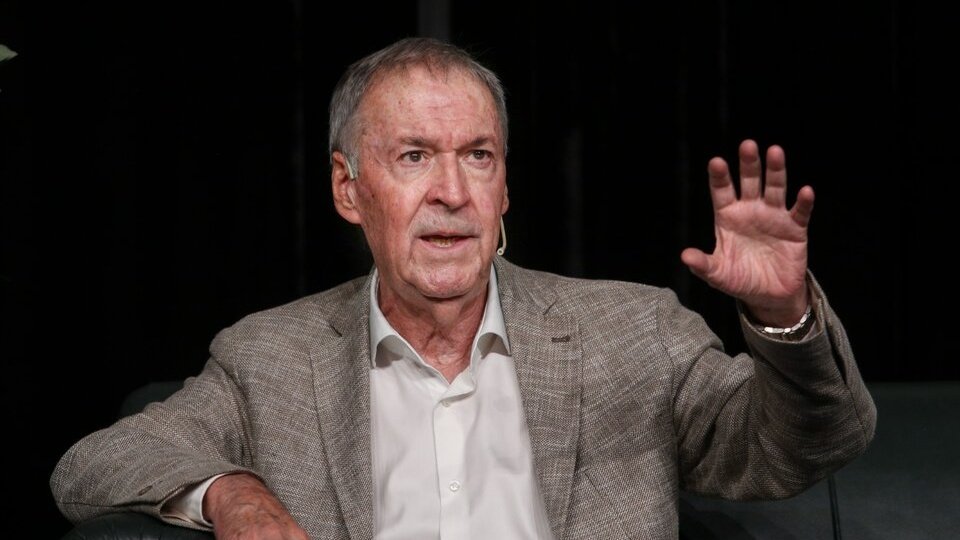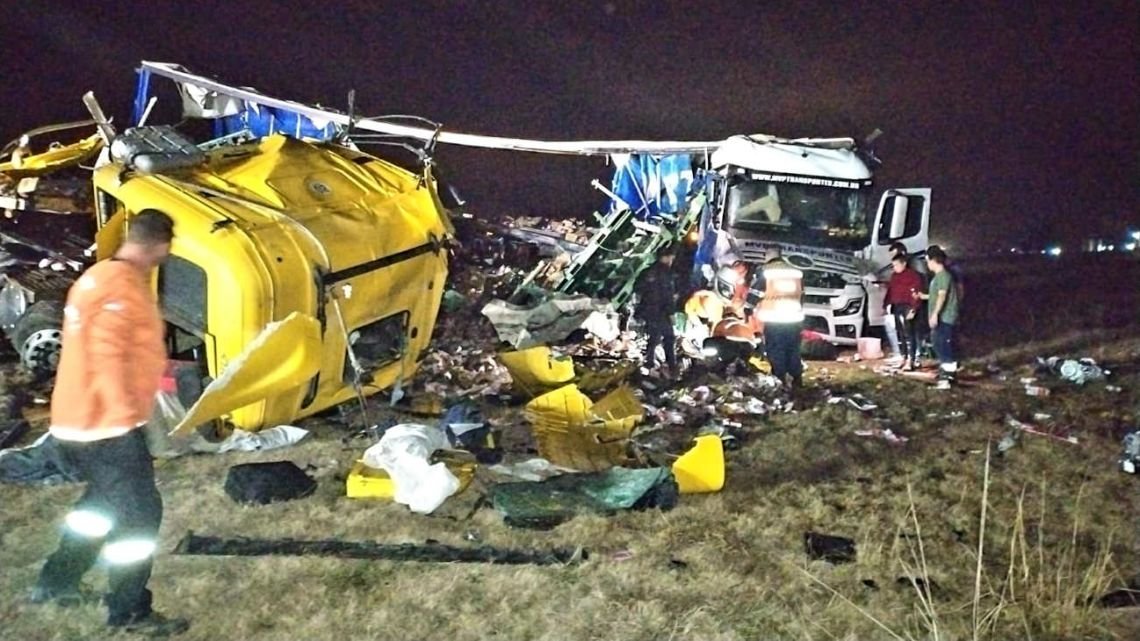On December 30, 2019, Trinidad Alberto de la Cruz Miranda – known as “El Pelón de Playas” (“The Bald Man of the Beaches”) – was arrested. As the leader of Los Zetas, one of the most dangerous Mexican drug cartels in the state of Tabasco, he was wanted for kidnapping, extortion, drug trafficking, arms dealing, illegal fuel sales and for co-opting government officials.
His arrest triggered the torching of vehicles and buildings, along with the appearance of banners that demanded his release. One of these messages named Hernán Bermúdez, who at the time was the newly-appointed secretary of Security and Citizen Protection for the state. Bermúdez had been in office for 19 days at the time, having been appointed by Tabasco Governor Adán Augusto López. The narco-banner read: “We’re coming for you, Hernán Bermúdez Requena, for being a traitor.” This was the first of many times that the Regional Intelligence Fusion Center (CERFI) and the Ministry of Defense identified Bermúdez, who would later adopt a code name. Following his appointment as head cop in Tabasco, he would be known as “Commander H.”
The latest crisis involving Morena, Mexico’s ruling party, bears his name. Hernán Bermúdez — who has been a fugitive since January and has a Red Notice issued by Interpol — has leapt into the national spotlight, implicating one of the party’s heavyweights: Senator Adán Augusto López, the former state governor who also served as secretary of the Interior under the previous administration. Members of the party in the state of Tabasco had already been warning about the former police chief for months.
Incumbent Governor Javier May publicly denounced Bermúdez back in November 2024 and again in January 2025 for having led La Barredora, a criminal gang, in the face of what he described as the negligence or apathy of his predecessors. Last weekend, the case exploded when the state’s military commander, General Miguel Ángel López, revealed that an arrest warrant had been issued for the former secretary (who is also a member of Morena) back in February.
Morena party members were quick to use the argument that previous governments have already used: just as former President Felipe Calderón (2006-2012) appointed Genaro García Luna — now serving time in a U.S. prison — as his secretary of the Interior, Adán Augusto López had no idea what his appointee was doing. “He probably had no clue,” legislator Ignacio Mier opined. “It’s all nonsense,” added Senate President Gerardo Fernández Noroña.
“It’s not [Augusto López] who has to clarify matters; the person under investigation is the former secretary of Security,” affirmed Luisa María Alcalde, the president of Morena, in an attempt to excuse him. However, on July 18, Mexican President Claudia Sheinbaum changed her tune: “It would be [advisable] for him to give his version of events.”
After this veiled order, Adán Augusto López finally emerged, if only online: “Even though I haven’t been summoned, I’m at the disposal of any authority that requests my presence,” he wrote on X, after days of silence.
Mexican Army documents released by the Guacamaya hacking group and accessed by EL PAÍS show that the Ministry of Defense and its Regional Defense Center had identified Hernán Bermúdez as a key player in Tabasco’s criminal network. In 2021, he appeared as one of the officials giving orders to criminal groups. And, a year later, he was described as the head of La Barredora, the local cell of the Jalisco New Generation Cartel (CJNG), which has been sowing chaos and violence in the state since last year. The military also collected several mentions of Governor Adán Augusto López in the emails sent between criminal leaders.
Kalimba’s execution
On December 4, 2020, a shock wave changed the criminal landscape in the state of Tabasco. Pantera and Toro (“Panther” and “Bull”) – the aliases of two independent criminal leaders dedicated to fuel theft – executed Kalimba, a huachicolero (“fuel thief”) leader linked to Los Zetas. With his assassination, they took control of four municipalities and part of Cárdenas, the second-most populous city in the state. They had permission to do so: it had been given to them by Commander H, the state head of Security and Citizen Protection. Pantera even received a call “from the man in Villahermosa to express his gratitude, telling [Pantera] he could take the [territory],” the Army noted, in a report from January 2021. The same report asserts that two state police commanders had offered to “provide [the fuel thieves] with support should they require it, both from the government and from individuals engaged in illicit activities (hitmen).” Weapons were also offered.
The state is a haven for fuel theft. And control of the municipalities means controlling PEMEX pipelines, the extraction and sale of fuel, as well as drug-trafficking, extortion, executions and migrant-smuggling. With Hernán Bermúdez as the state’s top cop, the Jalisco Cartel made its triumphant entry into the state. And, in the months following the organization’s arrival, banners in the name of the cartel and La Barredora began to appear.
On May 13, 2021, the Ministry of Defense for the first time identified Hernán Bermúdez as the head of the criminal network in Tabasco. He was the one who settled disputes between local leaders: he ordered executions and determined when it was appropriate for gangs to “settle their differences.” He dictated when a criminal group could enter a specific territory, while setting the price of releasing gang members.
“Pantera received a call from [Commander] H. The deal [consisted of him] sending half-a-kilo (possibly 500,000 Mexican pesos, or $27,000) with the three wives of [three] detainees to free them. Furthermore, he doesn’t want any [lawyers involved]; he doesn’t want anyone to find out about the deals being made,” the Mexican Army reported more than four years ago.
The state at the service of the CJNG
In his only statement about the case, Senator Adán Augusto López has defended the reduction in violence that his gubernatorial administration oversaw between January of 2019 and August of 2021. Homicides fell from more than 500 in 2018 to 250 under his tenure as governor. Kidnappings, meanwhile, plummeted by 87%, while extortion cases fell by 83%. However, what Mexican Army documents from those years reveal is that, clearly, “the authorities [within] the Prosecutor’s Office and the [Tabasco Public Safety Secretariat] are the [parties that] control the plaza bosses in their jurisdiction.”
The Mexican Army’s map of the criminal structure in Tabasco identifies Hernán Bermúdez as the leader. He also acted through Javier Reyes, the coordinator of the Municipal Police; Ulises Pinto, known as “El Mamado,” his second-in-command at the Secretariat, and Carlos Tomás Díaz Rodríguez, known as Licenciado Tomás, who had been an advisor to the director of Mexico’s Federal Ministerial Police (PFM) in the Tabasco Prosecutor’s Office. Furthermore, according to reports from the Ministry of Defense, José Felipe Padilla Castañeda, the coordinator of the National Guard in Tabasco, and Leonardo Arturo Leyva Ávalos, who was simultaneously the director-general of the State Police and leader of the CJNG in Tabasco, were also part of the criminal structure.
“This demonstrates the ongoing corruption of the authorities, highlighting that the CJNG can utilize the capabilities of the operational, technological, intelligence and information structures available in the state of Tabasco. [There’s total institutional neglect] of the objective of combating the organized crime prevalent in [Tabasco], which is being exploited by the cartel for its criminal purposes,” read the final comments drafted by the Southeast Regional Intelligence Fusion Center (CERFI) in July of 2021. At the time, Adán Augusto López was still the governor of Tabasco.
“Pantera is with the governor”
Benjamín Mollinedo is the real name behind the alias Pantera. He operated in the cities of Cárdenas, Huimanguillo, as well as in the state capital, Villahermosa. He changed his cell phone every two weeks and had “an operational structure consisting of approximately 50 people, who travel in Ford Platinum vehicles (possibly armored) with high-caliber weapons (Barretts, AK47s, AR15s, M4s, etc.).” He was arrested in September 2021, but before that, he went on a rampage of shooting and dismembering people in the state of Tabasco. Through him, two mentions of Adán Augusto López were found.

The Ministry of Defense, the Navy and the National Intelligence Center provided information to CERFI. On December 13, 2020, following surveillance of members of the Jalisco New Generation Cartel (CJNG), communication was obtained between Taca and Joncha, two cartel members involved in fuel-trafficking in Cárdenas. “It was [determined] that the person responsible for the execution of Andrés Rodríguez Vasconcelos, alias Kalimba, was Benjamín Mollinedo (“Pantera”), with the support of officers who received orders from the governor (perhaps referring to Adán Augusto López Hernández, governor of Tabasco),” the CERFI report notes.
The information center adds just below that Toro, whose real name is Samuel Paz, “specified that Pantera is [working] with the government, with the governor (perhaps Adán Augusto López Hernández, governor of Tabasco) […] In fact, the state leader offered him [payment] in exchange for [some work].” The CERFI report explains that this refers to Kalimba’s murder.
In its latest mapping of cartel structures, from August 2022, documents from the Mexican Army emphasize what they’ve been documenting for years: “A climate of insecurity has prevailed in the state of Tabasco.”
Sign up for our weekly newsletter to get more English-language news coverage from EL PAÍS USA Edition







